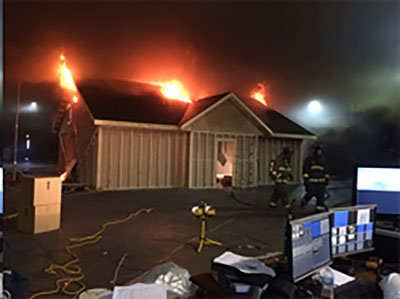
Education
This page summarizes the fire behavior research studies that can be used to support safer building codes. Learn how this research is conducted and how your experiences as a fire fighter can add to the knowledge on fire behavior and fire suppression tactics.
This page also provides links to the teaching videos on the IAFF’s Learning Management System (LMS) on a variety of building code issues, including green building initiatives, learning from past tragedies, the code development process for the ICC and NFPA, and how to get involved in local code hearing meetings.
Fire Behavior Research
Writing new building and fire codes requires background data from reputable research organizations that conduct controlled burns to measure the effects of lightweight building materials, furniture upholstery, building materials, home design, and roof support structures on fire behavior. Always remember to check the source of the research before including the results in your code proposals. Credible research organizations do more than just set materials on fire; they control for multiple environmental factors to measure the direct impact of a building material or firefighting tactic. Fire ratings of building materials and furnishings must be evaluated using specific standards by certified labs only.
Research studies may also take place in fire training facilities to simulate real-world situations and the use of accelerants, occupancy loads, building maintenance issues, and ventilation techniques.
As IAFF members, you have first-hand experience of the fire environment and firefighting tactics, which no study can simulate. Use your knowledge to supplement the data from fire behavioral studies to support building and fire codes that result in structurally sound buildings that provide occupants enough time to escape and fire fighters enough time to do their jobs safely.
Fire Behavioral Studies
Below are research studies on building components, flame spread, smoke behavior, and fire fighter fatalities due to structural collapse. Browse through the studies below and think about how the data can help you advocate for safer codes in your city or town: